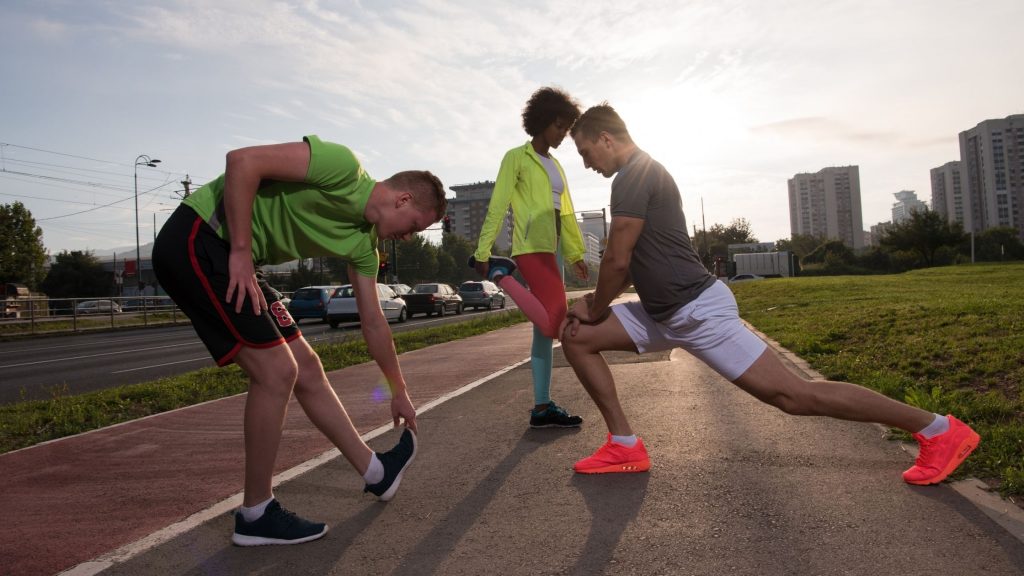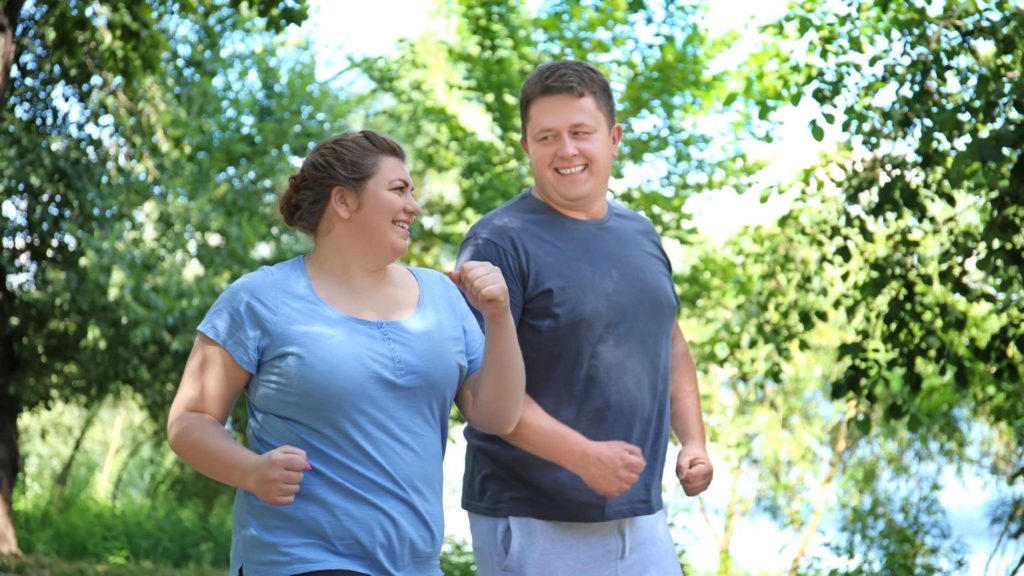Last updated on July 11th, 2025 at 05:08 pm

Research has found that warmup before sports prevents on-field injury and improves performance3. Warming up is crucial for athletes mentally and physically preparing for training sessions and competitions. It helps increase body temperature, stimulate the neuromuscular system, and meet the demands of the game1.
In the past, the focus of warming up was on raising body temperature and loosening muscles to prevent injuries2. However, recent research has shed light on the additional benefits of warming up.
This article will teach the science behind the warm-up and how a well-designed warm-up can elevate your game.
Why Warming Up is Crucial for Athletes: Science-Backed Benefits
1) How Warming Up Boosts Athletic Performance
A study published in Frontiers in Sports and Active Living highlights that specific warm-up methods can significantly improve performance.
Dynamic stretches that mimic the movements of your sport and eccentric exercises that focus on lengthening muscles under tension can prime your body for peak performance.
2) Warm-Ups Reduce Injury Risk: Here’s How
It’s essential to warm up before exercising, as cold muscles are tight and stiff, increasing the risk of strains and tears. A warm-up helps increase blood flow, loosen muscles, and improve their elasticity, making them more flexible and resilient.
However, many hockey players at our academy have been experiencing pain unrelated to any injury. Common complaints athletes develop after the training sessions are:
- Dull aching pain in the thighs.
- Generalised body pain.
- Pain in the ankle, both inside and outside.
- Pain knee.
- Calf muscle pain.
I found that they neglected to cool down after their games. This is because they were unaware of the importance of warm-up and its effects on the body.
It’s important to remember that muscle soreness can still occur even with proper warm-up and cool-down. Therefore, knowing how to manage muscle soreness after a workout is crucial.
3) Mental Benefits: How Warming Up Sharpens Focus
A good warm-up routine can help you mentally transition from rest to activity. It allows you to focus on your movements and prepare for the physical challenge.
What should your ideal warm-up look like?
Here are some key takeaways:
- Light Aerobic Exercise: Jogging, light cycling, or jumping jacks can increase blood flow and heart rate.
- Dynamic Stretches: These stretches mimic the movements of your sport and help prepare your muscles for action.
- Sport-Specific Drills: Include drills that resemble the movements you’ll perform during your activity.
- Listen to Your Body: Don’t push yourself too hard during the warm-up. The goal is to prepare, not exhaust yourself.
How Warming Up Prepares Your Body for Peak Performance
When we are at the peak of the game or simply when we are running, you would have observed that our bodies feel excited and energetic. Our bodies get warm, and we sweat heavily. Here are the bullet points of what goes on in our bodies.
- Our rate of breathing increases.
- Increase in the heartbeat.
- The temperature of the body increases.
- Sweating increases.

All of this is to meet the increased oxygen demand by our muscles and body. When we run, our muscles have to work harder, and their oxygen demand rises manifold. To meet this demand, the heartbeat increases to pump blood to muscle through our capillary system.
As more oxygen is consumed, our rate of respiration increases, pumping more oxygen into the body. Increased blood flow to the body increases the body temperature, which results in more sweating.
So, this is how our body responds when running or playing any outdoor sports. This will explain why warming up and cooling down are so important before and after sports.
Before we start playing, our body is in a state of rest. How heart rate, breathing rate, and everything we discussed above are normal and in the state of rest.
By warm-up, we are preparing our bodies for the state of the peak of sports. We are gradually increasing the rate of breathing and the rate of heartbeat. It is a step-by-step process that warms the body up.
5 Risks of Skipping Warm-Up and Cool-Down Exercises
By not doing the warm-up activity, we are putting a sudden load on our cardiovascular system. If the sudden surge in oxygen demand by our muscles is unmet, it may result in muscle soreness and dull, aching pain.
Although there is no research evidence to support the fact that warm-up can entirely prevent all muscle pain, it can surely minimise it.
Why Cooling Down is Just as Important as Warming Up
We know why warming up is essential, but what about cooling down? Cooling down is just the reverse of warming up. We have to do it gradually to bring the body back to a state of rest from the peak of sports.
A step-by-step process of cooling down prepares our body for the next day.
Final Thoughts: Make Warming Up Non-Negotiable
It is highly recommended that you know why warming up is essential before performing a warmup and cooling down as suggested. Instead, a severe athlete should make it a ritual.
It takes nothing for 10 minutes of warm-up before commencing your sports and 10 minutes of cooling down; instead, it can prevent many kinds of body pain and aches that otherwise would have hindered your performance.
Do you warm up before workouts? Share your routine in the comments!
Keep Reading: 4 Tips for Faster Muscle Recovery After Workout
FAQ
The author is a physiotherapist who has been practising for the last 17 years. He holds a Bachelor's in Physiotherapy (BPT) from SVNIRTAR (Swami Vivekananda National Institute of Rehabilitation and Research), one of the prestigious physiotherapy schools in India.
Whatever he learns dealing with his patient, he shares it with the world through blogs and e-books. He also owns a YouTube channel, "Sunit Physiotherapist" with over 8 lakh active subscribers. Here, he shares everything he gets to learn serving the patient.






Pingback: How to Stop Muscle Pain After Workout - Physiosunit
Pingback: 2 Stretching Exercise for Calf Muscle Pain Relief Instantly - Physiosunit
Pingback: 5 Easy Shin Splint Stretches & Tips for Instant Relief - Physiosunit
Pingback: Is Paleo or keto better? Choose the right diet you : Physiosunit
Pingback: How do you relieve calf pain? Hint: 2 Stretching Exe : Physiosunit
Pingback: 7 Best Stretching Exercise for Quick Body Ache Relief : Physiosunit
I think I’ll sign up for some pre-shift warmup programs so I’ll know how to do warmup exercises properly. Since I’m going to make marathoning into something I’ll do regularly so I can win many medals, I’ll have to make sure that I’ll be suffering from little to no injuries after the game so I can participate in another marathon event after two weeks. As you’ve mentioned, those who do warmup exercises tend to prepare themselves at their sports routines, and I want to prevent the possibility of having many injuries.
nice information. Thanks a lot for sharing it.
details click here >>>> Daily Health Care Tips